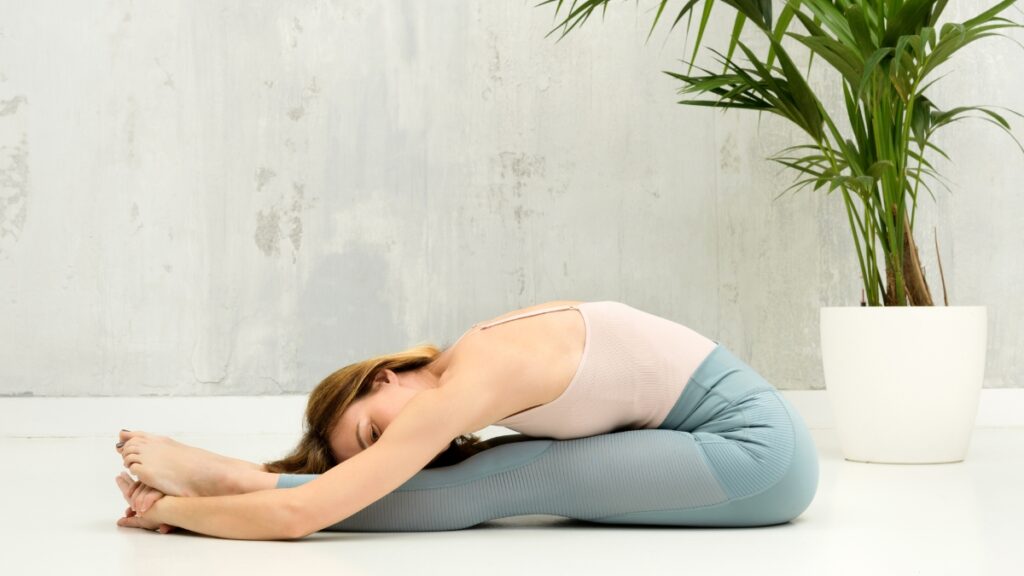Discover basic yoga poses for beginners with step-by-step instructions and accompanying pictures to help you get started. Practicing yoga can improve flexibility, strength, and balance while promoting relaxation and mindfulness.
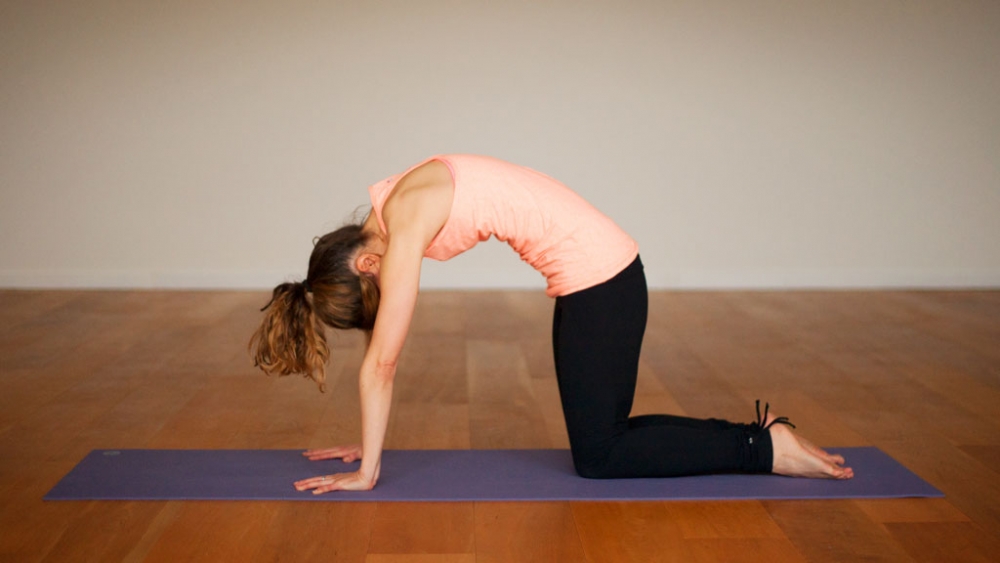
Credit: www.ekhartyoga.com
Understand The Importance Of Yoga For Beginners
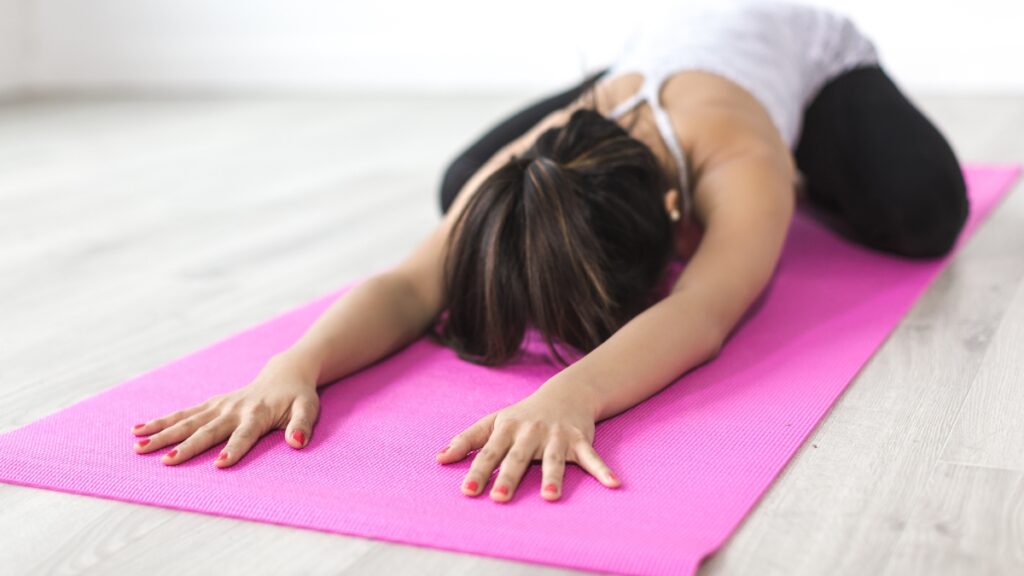
Discover the significance of beginner yoga with our comprehensive guide to basic yoga poses. Immerse yourself in the world of yoga through detailed descriptions and accompanying pictures. Embark on a journey of self-discovery and wellness with the help of these essential poses designed for beginners.
Yoga is not just a physical exercise, but a holistic practice that encompasses the mind, body, and spirit. It has been practiced for centuries, with origins in ancient India. Life today can be stressful, and yoga offers a refuge from the chaos, allowing beginners to find balance and peace within themselves. By embracing yoga as a beginner, you lay the foundation for a healthier and more fulfilling life.
Benefits Of Practicing Yoga For Beginners
1. Physical fitness: Yoga helps improve flexibility, strength, and coordination. Through various poses, beginners can increase their range of motion, build core strength, and improve muscle tone.
2. Stress relief: In our fast-paced lives, stress is all too common. Yoga provides an opportunity to unwind and relax. It stimulates the parasympathetic nervous system, promoting a sense of calm and tranquility.
3. Mental clarity: Yoga is not just about the physical postures; it also incorporates mindfulness and meditation. These practices help beginners cultivate mental clarity, reduce anxiety, and increase focus and awareness.
4. Improved breathing: Deep breathing is an integral part of yoga. As beginners learn to synchronize their breath with movement, they enhance lung capacity, oxygenate their bodies, and reduce tension.
How Yoga Can Improve Physical And Mental Well-being
1. Enhanced physical health: Regular practice of yoga improves cardiovascular health, strengthens muscles, and increases flexibility. It can also enhance digestion, boost immunity, and promote better sleep.
2. Greater mental resilience: Yoga cultivates mental resilience by training the mind to stay present and focused. This can help beginners manage stress and anxiety more effectively, leading to improved mental well-being.
3. Emotional well-being: Yoga helps beginners connect with their emotions and develop a greater sense of self-awareness. This can lead to improved emotional regulation, increased self-confidence, and a more positive outlook on life.
4. Spiritual growth: Yoga is a spiritual practice that encourages self-discovery and inner growth. It provides a platform for beginners to explore their spirituality, develop a deeper connection with themselves, and find meaning and purpose in life.
By embracing yoga as a beginner, you embark on a journey of self-improvement, cultivating physical and mental well-being. The benefits extend far beyond the physical aspect, offering a path towards a more balanced and fulfilling life.
Getting Started: Preparing For Your Yoga Practice
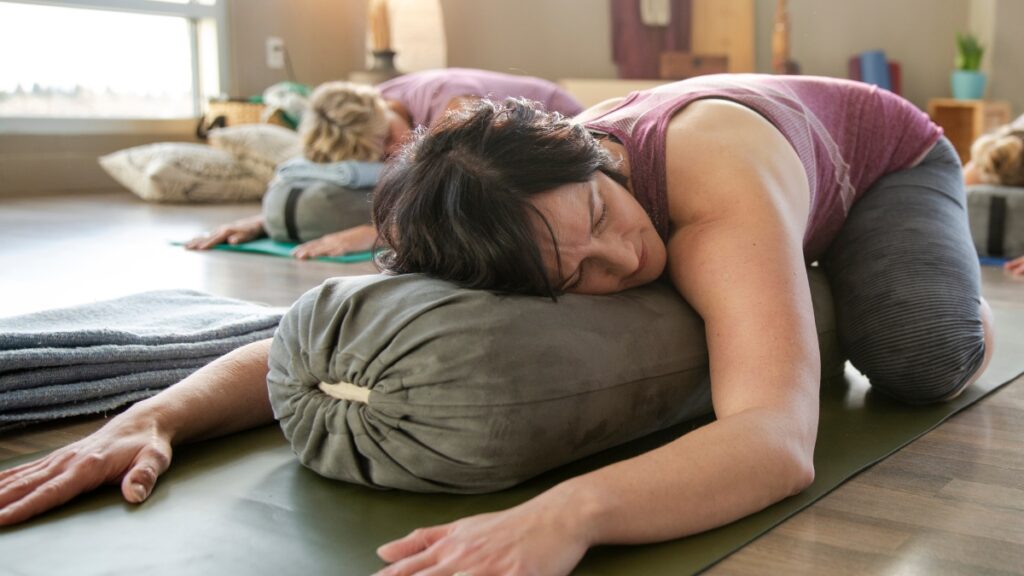
Getting started with yoga can be an exciting yet overwhelming experience, especially for beginners. Preparing for your yoga practice is important to ensure a safe and comfortable experience. By focusing on essential equipment for yoga beginners and creating a suitable practice space, you can set yourself up for success in your yoga journey.
Essential Equipment For Yoga Beginners
To get started with yoga, you don’t need a lot of fancy equipment. However, a few essential items can enhance your practice and make it more comfortable. Here are some items to consider:
| Yoga mat: | A good quality yoga mat provides a stable and non-slip surface, allowing you to perform poses with ease. Look for a mat with good grip and enough cushioning for your comfort. |
| Yoga blocks: | Yoga blocks are great props for beginners as they help with stability and provide support during certain poses. They can be especially helpful for those with limited flexibility. |
| Yoga strap: | A yoga strap can assist in achieving proper alignment and deeper stretches. It’s particularly useful if you have tight muscles or limited range of motion. |
| Yoga blanket: | A soft and comfortable yoga blanket can be used for extra padding or to support your body in certain poses. It also adds warmth during relaxation and meditation. |
| Comfortable clothing: | Wear loose and breathable clothing that allows you to move freely. Choose fabrics that absorb sweat and avoid any attire that restricts your movements. |
Creating A Comfortable And Safe Practice Space
Having a dedicated space for your yoga practice can greatly enhance your experience. Follow these tips to create a comfortable and safe practice space:
1. Find a quiet spot: Look for a space where you won’t be easily disturbed. It could be a corner in your room, a spare room, or even outdoors if weather permits.
2. Clear the area: Remove any clutter or furniture that may hinder your movements. Having a spacious and clean area allows you to move freely without any obstacles.
3. Set the mood: Creating a calming ambiance can help you get in the right mindset for yoga. Use soft lighting, candles, or play relaxing music that promotes mindfulness.
4. Ensure proper ventilation: Good air circulation is essential during your practice. Open windows or use a fan to maintain a fresh and comfortable environment.
5. Maintain a safe environment: Ensure that the area is free from any hazards or potential dangers. Check for any sharp objects or slippery surfaces that may cause accidents.
6. Practice on a non-slip surface: Use your yoga mat or place a non-slip surface on the floor to prevent any accidental slips or falls.
7. Keep water nearby: Stay hydrated throughout your practice by having a water bottle within reach. It’s important to replenish fluids, especially if you’re practicing for an extended period.
By having the necessary equipment and creating a suitable practice space, you can fully immerse yourself in your yoga practice. Set aside dedicated time for your sessions, and always listen to your body’s needs to ensure a safe and enjoyable experience.
Essential Basic Yoga Poses For Beginners
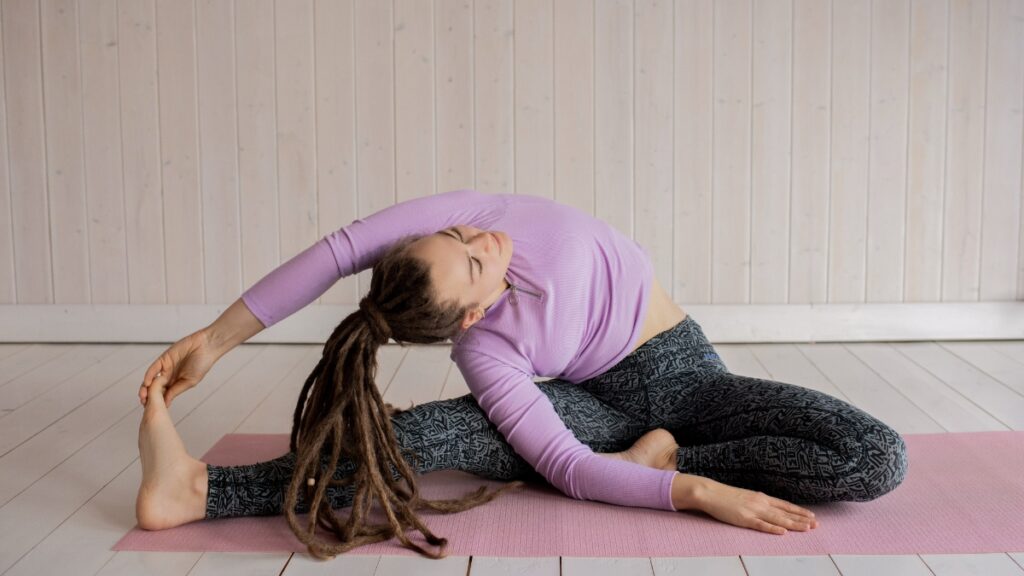
Discover the essential basic yoga poses for beginners with pictures to help you kickstart your yoga journey. These beginner-friendly poses will provide a solid foundation, allowing you to improve flexibility, strength, and balance. Embrace the benefits of yoga and start your practice today!
Mountain Pose (tadasana)
The Mountain Pose, or Tadasana, is a foundational pose in yoga. It may seem simple, but it’s the perfect way to start your yoga practice. Stand tall with your feet hip-width apart, grounding through all four corners of your feet. Lengthen your spine, relax your shoulders, and engage your core. Take deep breaths, feeling rooted and stable like a mountain.
Downward-facing Dog (adho Mukha Svanasana)
Downward-Facing Dog, or Adho Mukha Svanasana, is a classic pose that stretches and strengthens the entire body. Start on your hands and knees, then lift your hips up and back, creating an inverted “V” shape with your body. Press your hands firmly into the mat, relax your neck, and let your heels sink towards the floor. This pose is great for releasing tension in the back and increasing flexibility.
Child’s Pose (balasana)
In Child’s Pose, or Balasana, you can find a moment of rest and relaxation. Begin by kneeling on the mat, then sit back on your heels and fold your body forward, resting your forehead on the ground. Extend your arms forward or keep them alongside your body. Breathe deeply and let go of any tension or stress you may be holding onto. Child’s Pose is a gentle stretch for the back and hips.
Warrior I (virabhadrasana I)
Warrior I, or Virabhadrasana I, is a powerful pose that builds strength and stability. Start by stepping one foot forward into a lunge position, and then turn your back foot out at a 45-degree angle. Square your hips towards the front of the mat and reach your arms overhead, palms together. Sink into the lunge, keeping your front knee directly above your ankle. This pose helps improve balance, focus, and posture.
Tree Pose (vrikshasana)
Tree Pose, or Vrikshasana, is a standing balance pose that promotes stability and focus. Begin by standing tall with your feet hip-width apart. Shift your weight onto one leg and place the sole of your other foot on the inner thigh or calf of your standing leg. Avoid placing your foot directly on the knee to prevent injury. Find your balance and bring your hands to your heart center. Feel like a tree rooted into the ground, extending your branches towards the sky. This pose improves concentration and strengthens the ankles and legs.
Mastering Alignment And Breathing Techniques
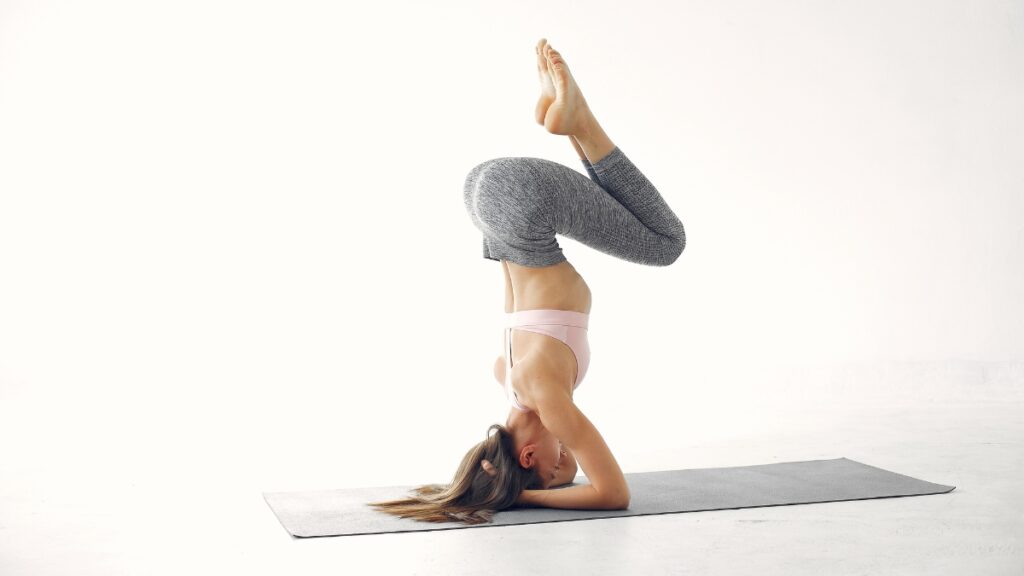
Proper alignment and breathing techniques are fundamental pillars of yoga practice. Mastering these aspects not only enhances the effectiveness of your poses but also helps prevent injuries and promotes overall well-being. In this section, we will dive into the importance of proper alignment in yoga poses, techniques for finding balance and engaging core muscles, and the incorporation of deep breathing for relaxation and focus.
Importance Of Proper Alignment In Yoga Poses
Aligning your body correctly while performing yoga poses is crucial to optimize the benefits and avoid strain or injury. When your body is properly aligned, energy flows smoothly, allowing you to experience the full range of motion and engage the targeted muscles effectively. Here are a few key aspects to consider when it comes to alignment:
- Spine alignment: Keep your spine lengthened and your natural curves intact. Imagine a straight line from the top of your head to your tailbone.
- Engaged core: Strengthen your core muscles by gently drawing your navel towards your spine. This not only provides stability but also helps protect your lower back.
- Distribute weight evenly: Whether standing or balancing on one foot, distribute your weight evenly between both sides of your body or the appropriate limbs. This fosters stability and prevents unnecessary strain on particular joints.
- Joint alignment: Pay attention to aligning your joints, such as keeping your knees over your ankles or your wrist aligned with your shoulders. This promotes proper body mechanics and reduces the risk of injury.
Techniques For Finding Balance And Engaging Core Muscles
Finding balance and engaging your core muscles go hand in hand in yoga practice. By incorporating these techniques, you can build both physical strength and stability. Here are some valuable methods to help you achieve balance and engage your core:
- Stacking joints: Focus on aligning your joints so that they are stacked vertically. This creates a strong foundation and helps find stability in various poses.
- Mindful weight distribution: Be conscious of how you distribute your weight in different poses. Acknowledge the sensations and make adjustments to find an even balance.
- Engaging the core: Prioritize activating your core muscles in each pose. This will not only provide support for your spine but also improve your overall posture and body control.
- Breathing with intention: Utilize your breath to support your core engagement. On each exhale, envision drawing your navel towards your spine, allowing the breath to deepen your connection to your core.
- Focus and concentration: Maintain steady focus and concentration during your practice. By engaging your mind, you can better attune to your body’s alignment and core engagement.
Incorporating Deep Breathing For Relaxation And Focus
In addition to alignment and core engagement, incorporating deep breathing techniques into your yoga practice brings relaxation and focus to your mind and body. Mindful breathing helps to release tension, reduce stress, and enhance your overall yoga experience. Here are a few strategies to integrate deep breathing:
- Ujjayi breath: Practice the Ujjayi breath by gently constricting the back of your throat as you inhale and exhale, creating an audible whisper-like sound. This technique calms the nervous system and allows you to focus and stay present.
- Dirga Pranayama: Engage in the Dirga Pranayama technique, also known as the three-part breath. Inhale deeply through your nose, filling your belly, ribs, and chest with breath. Exhale fully, allowing each breath to be a mindful release.
- Timing with movements: Coordinate your breath with your movements. Inhale as you lengthen or expand your body, and exhale as you fold or contract. This synchronization helps create a meditative rhythm throughout your practice.
- Meditative pauses: Take moments of stillness between poses to focus on your breath. Use these pauses to reset your alignment, re-engage your core, and deepen your breath, allowing for a more harmonious flow from one pose to another.
Developing A Consistent Yoga Practice
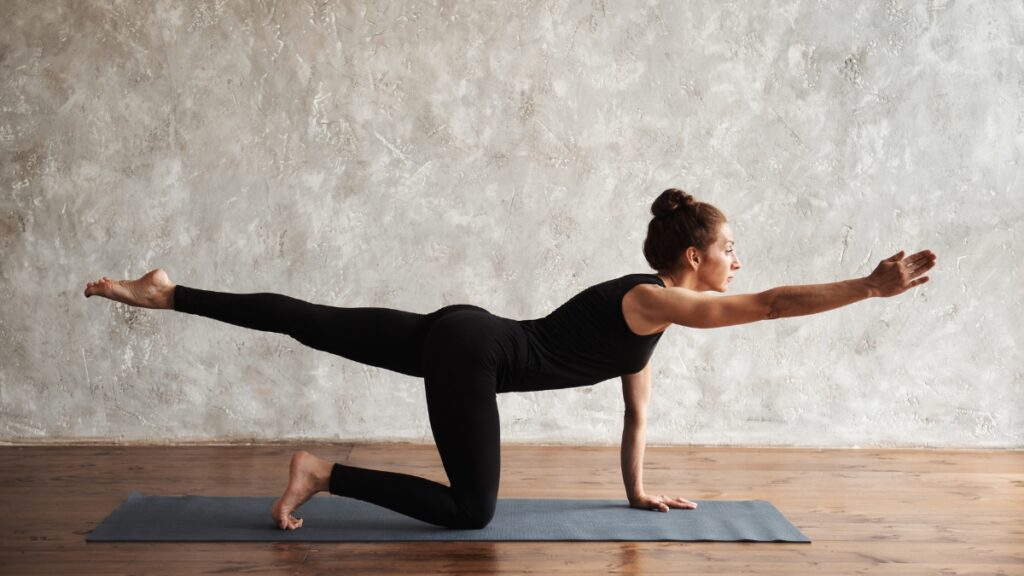
Yoga is a practice that offers numerous benefits for both the body and the mind. However, to truly experience these benefits, it’s important to establish a consistent yoga routine. By developing a regular practice, you can cultivate mindfulness, improve flexibility, build strength, and enhance overall well-being. In this article, we will explore three essential aspects of developing a consistent yoga practice: establishing a regular yoga routine, setting manageable goals for progress, and finding motivation to overcome challenges.
Establishing A Regular Yoga Routine
Creating a regular yoga routine is key to making yoga an integral part of your lifestyle. The following steps can help you establish a consistent practice:
- Set aside a dedicated yoga space: Designate a specific area in your home where you can practice yoga comfortably. Clear the space of any distractions and create a peaceful ambiance.
- Determine the time that works best for you: Choose a time during the day that suits your schedule and energy levels. Whether it’s early morning, during lunch break, or in the evening, find a consistent time that allows you to commit to your yoga practice.
- Start with short sessions: If you’re a beginner, beginning with shorter practice sessions can help you ease into a routine. Aim for 15 to 30 minutes initially, gradually increasing the duration as you become more comfortable.
- Create a schedule: Plan your yoga sessions for the week ahead. By scheduling your practice in advance, you are more likely to commit to it, treating it as a non-negotiable part of your day.
- Hold yourself accountable: Share your intentions with a friend or family member who can help hold you accountable. Additionally, tracking your progress in a yoga journal or on a calendar can provide further motivation.
Setting Manageable Goals For Progress
Setting goals is crucial to measure progress and stay motivated on your yoga journey. Here’s how you can set achievable goals:
- Start with the basics: As a beginner, focusing on mastering foundational poses is essential. Set small goals, such as holding a pose for a specific duration or increasing your flexibility gradually.
- Gradually challenge yourself: As you gain confidence and strength, set goals that push you out of your comfort zone. Aim to conquer more advanced poses or deepen your practice by exploring different styles of yoga, such as Vinyasa or Ashtanga.
- Be patient and realistic: Yoga is a continuous journey, and progress takes time. Embrace the process and celebrate small victories along the way. Avoid comparing yourself to others and focus on your own growth.
Finding Motivation And Overcoming Challenges
Staying motivated in your yoga practice can sometimes be challenging. Here are some strategies to help you stay inspired and overcome obstacles:
- Explore different styles and teachers: Trying different styles of yoga and practicing with various teachers can keep your practice fresh and exciting. Experimenting with new poses and techniques can reignite your passion for yoga.
- Join a yoga community: Engaging with a yoga community, either in person or online, can provide support and encouragement. Sharing your experiences, attending workshops, and participating in challenges can help you stay motivated.
- Practice self-compassion: Treat yourself with kindness and compassion throughout your yoga journey. Do not be too hard on yourself if you miss a day or struggle with a particular pose. Accept where you are in the present moment.
- Modify and adapt: If you face physical limitations or injuries, modify poses to suit your needs. Listen to your body and make adjustments accordingly. Remember, yoga is a personal practice, and it can be adapted to accommodate various abilities and circumstances.
By following these guidelines, you can develop a consistent yoga practice that brings balance, strength, and tranquility into your daily life. Committing to a regular routine, setting achievable goals, and finding the motivation to overcome challenges will help you thrive on your yoga journey.
Frequently Asked Questions For Basic Yoga Poses For Beginners With Pictures
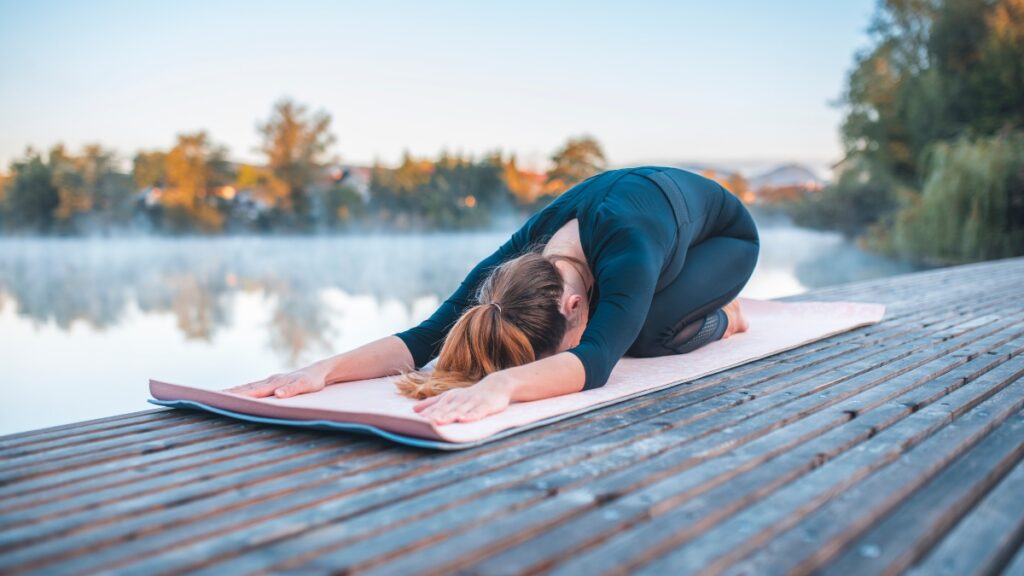
What Is The Easiest Yoga To Start With?
The easiest yoga for beginners is Hatha yoga. It focuses on basic poses and breathing exercises.
What Poses Should I Start With Yoga?
Start your yoga practice with basic poses like Tadasana (Mountain Pose), Balasana (Child’s Pose), and Adho Mukha Svanasana (Downward Facing Dog). These poses help improve balance, flexibility, and strength.
Is There An Order To Yoga Poses?
Yes, there is a specific order to yoga poses. It is called a sequence, which typically starts with warm-up poses, followed by standing, balancing, seated, and ending with relaxation poses. The sequence helps to gradually warm up and prepare the body, and allows for a balanced and holistic practice.
What Are Some Basic Yoga Poses For Beginners?
– Basic yoga poses for beginners include mountain pose, child’s pose, downward-facing dog, and warrior I pose. These poses help improve flexibility, balance, and strength, making them ideal for those new to yoga.
Conclusion
To wrap up, these basic yoga poses for beginners are an excellent way to embark on your yoga journey. By starting with foundational poses like mountain, downward dog, and child’s pose, you can lay a strong groundwork for your practice.
With the help of the accompanying pictures, you can easily follow along and ensure proper form. Remember, consistency and patience are key as you explore the benefits of yoga for your mind, body, and soul. So, roll out your mat, take a deep breath, and let the poses guide you towards greater wellbeing.

